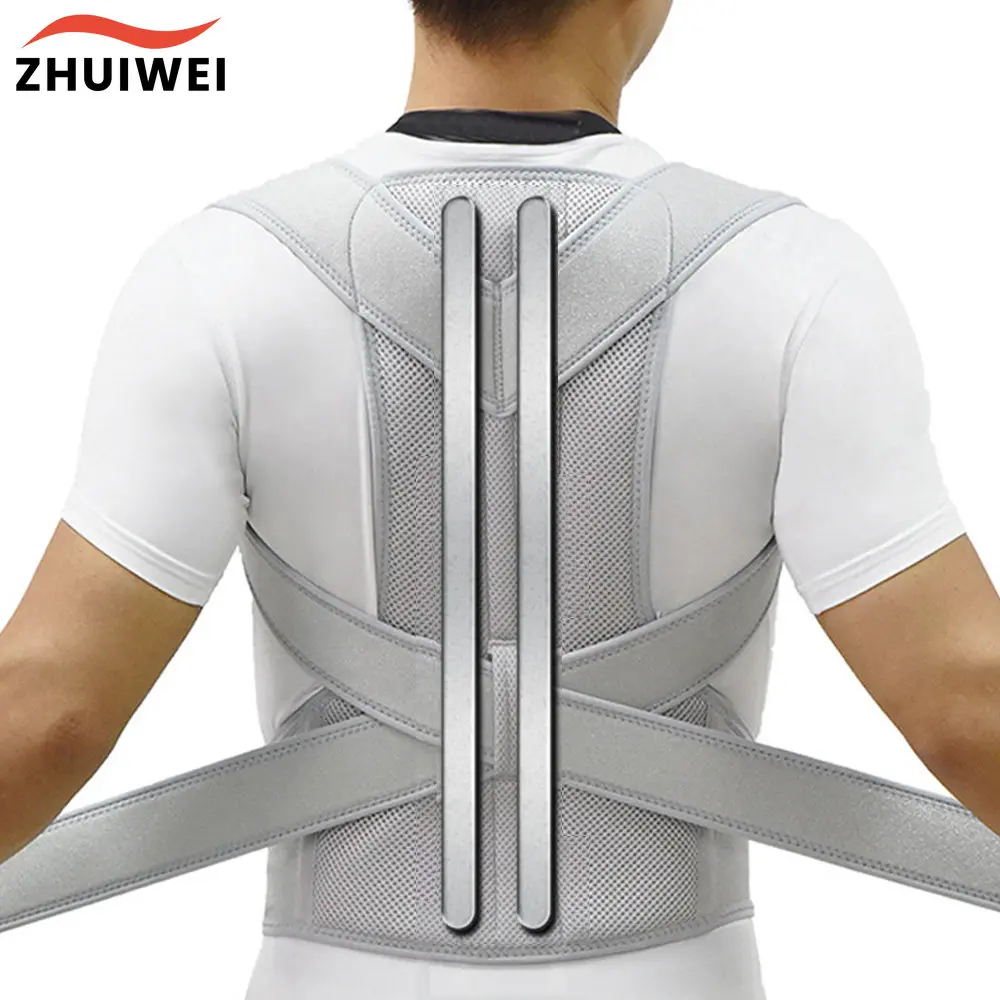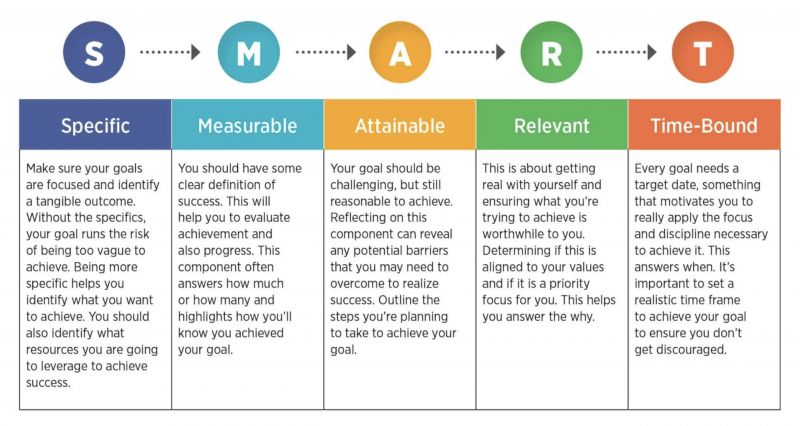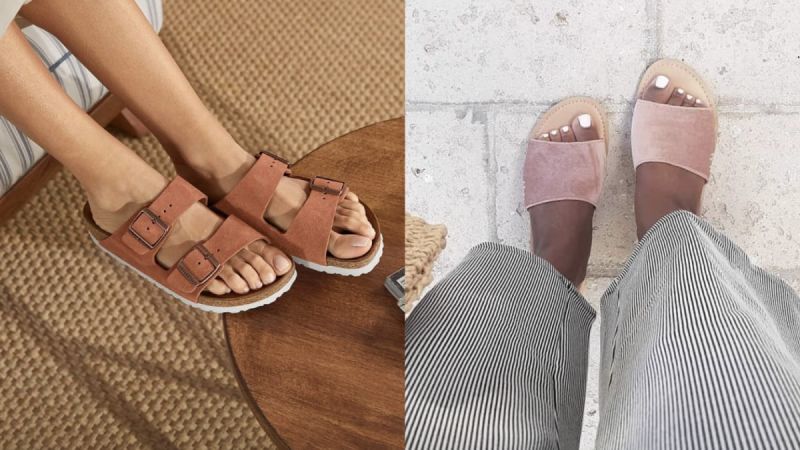How to effectively reshape a warped lacrosse head at home. What are the best methods for restoring your equipment’s shape. When should you consider professional help for reshaping your lacrosse head.
Understanding Lacrosse Head Warping: Causes and Solutions
Lacrosse players often encounter the frustrating issue of warped heads. This common problem can significantly impact your game performance. But what causes lacrosse heads to warp?
- Excessive heat exposure (e.g., leaving equipment in a hot car)
- Improper storage
- Regular wear and tear from intense gameplay
- Manufacturing defects
Fortunately, warped lacrosse heads don’t always necessitate a replacement. With the right techniques, you can often restore your equipment to its original shape, saving both time and money.
The Warm Water Method: A Step-by-Step Guide
One of the most effective ways to reshape a warped lacrosse head is the warm water method. This technique allows you to soften the plastic and gently manipulate it back into shape.

Preparing the Water
Start by filling a large container with warm water. The ideal temperature should be similar to that of a hot tub – warm enough to make the plastic pliable, but not so hot that it damages the material. Avoid using boiling water, as extreme temperatures can irreparably harm your equipment.
Soaking the Head
Submerge the netted portion of the lacrosse head fully in the warm water. Allow it to soak for 10-15 minutes, giving the plastic time to soften and become more malleable.
Reshaping Process
After the soaking period, gently remove the head from the water. Using your hands and a lacrosse stick shaft for leverage, carefully bend the warped areas back into their original shape. Work slowly and avoid applying excessive force, as the plastic will still have some rigidity.
Periodically re-submerge the head in the warm water if it starts to cool and stiffen. Continue this process of soaking and reshaping until you achieve the desired alignment.
Cooling and Setting
Once you’re satisfied with the shape, rinse the head under cool water or allow it to air dry. This will help the plastic harden and set in its new form. Avoid over-flexing the head while it’s still warm to prevent potential damage.

Leveraging Tools for Effective Reshaping
While hands alone can often suffice for minor warps, more severe cases may require additional tools. The lacrosse stick shaft proves particularly useful in these situations.
Using a Lacrosse Stick Shaft
The shaft can provide extra leverage when reshaping stubborn areas of the head. Insert the shaft into the head and use it as a lever to apply controlled pressure. This technique is especially helpful for addressing warps in hard-to-reach spots or when dealing with particularly rigid plastics.
Additional Tools
In some cases, you might find other household items useful:
- Wooden spoons for applying localized pressure
- Rubber bands to hold certain areas in place while cooling
- Towels to protect your hands from heat
Remember, the key is to use these tools gently and strategically. Excessive force can lead to further damage or even breakage.
Prevention: Keeping Your Lacrosse Head in Shape
While knowing how to reshape a warped head is valuable, prevention is always preferable. How can you maintain your lacrosse head’s shape and extend its lifespan?

- Store your equipment in a cool, dry place
- Avoid leaving your lacrosse stick in direct sunlight or hot cars
- Use a ball stop or shooting strings to maintain pocket shape when not in use
- Regularly inspect your head for early signs of warping
- Consider rotating between multiple heads to distribute wear
By implementing these preventative measures, you can significantly reduce the likelihood of dealing with a warped head in the future.
When to Seek Professional Help
While many warps can be addressed at home, some situations may call for professional intervention. When should you consider seeking expert assistance for your lacrosse head?
- Severe warping that doesn’t respond to home remedies
- Cracks or structural damage accompanying the warp
- High-end or specialized heads that require precise shaping
- Repeated warping issues with the same head
Professional lacrosse equipment technicians have specialized tools and expertise to handle complex reshaping tasks. They can often salvage heads that might seem beyond repair to the average player.

The Impact of Warped Heads on Gameplay
Understanding the effects of a warped lacrosse head on your performance can help motivate proper maintenance and prompt addressing of issues. How does a warped head influence your game?
Throwing Accuracy
A warped head can significantly impact the accuracy of your throws. The altered shape affects the release point of the ball, leading to inconsistent passes and shots. This can be particularly detrimental in high-pressure game situations where precision is crucial.
Ball Control
Warping can change the pocket shape and depth, affecting your ability to control the ball. You may find it harder to catch passes or maintain possession during cradling, potentially leading to more turnovers.
Shooting Power
The structural integrity of the head plays a role in shot power. A warped head may flex differently upon ball release, potentially reducing the force behind your shots.
Consistency in Play
Perhaps most importantly, a warped head introduces an element of unpredictability to your game. The inconsistent performance can shake your confidence and force you to constantly adjust your technique.

By maintaining your lacrosse head’s shape, you ensure that your equipment supports rather than hinders your performance on the field.
Innovative Techniques for Stubborn Warps
Sometimes, traditional reshaping methods may not suffice for particularly stubborn warps. In these cases, players and equipment managers have developed some innovative techniques. What are some of these advanced methods for dealing with persistent warps?
The Freezer Method
This technique involves alternating between heat and cold to manipulate the plastic. After the initial warm water soak and reshaping, wrap the head tightly in a shape-maintaining position and place it in the freezer for a few hours. The rapid cooling can help “set” the new shape more effectively.
Gradual Reshaping
For severe warps, a gradual approach might be necessary. Instead of trying to fully correct the shape in one session, make small adjustments over several days. This allows the plastic to slowly adapt to its new form, reducing the risk of cracking or over-stressing the material.

Heat Gun Technique
For those with access to a heat gun, this tool can provide more localized and controlled heating. However, this method requires extreme caution to avoid overheating and damaging the head. Always use the lowest effective temperature setting and keep the heat gun moving to distribute heat evenly.
Remember, these advanced techniques carry a higher risk of damaging your equipment if not done correctly. They should only be attempted as a last resort before seeking professional help.
The Future of Lacrosse Head Design
As the sport of lacrosse continues to evolve, so does the technology behind the equipment. What innovations are manufacturers introducing to combat the issue of warping?
Advanced Materials
Some companies are experimenting with new plastics and composite materials that offer greater resistance to warping. These materials aim to maintain their shape even under extreme conditions, potentially reducing the frequency of reshaping needs.
Reinforced Structures
Innovative internal structures and ribbing designs are being developed to provide additional support to lacrosse heads. These reinforcements can help heads retain their shape even after prolonged use and exposure to various environmental conditions.

Smart Materials
Looking further into the future, we might see the introduction of “smart” materials in lacrosse head design. These could potentially include plastics with shape memory properties, allowing them to return to their original form when exposed to specific stimuli like heat or electrical current.
Customization Technologies
Advances in 3D printing and molding technologies may soon allow for more personalized lacrosse heads. This could potentially include heads designed to resist warping in ways specific to an individual player’s style and usage patterns.
While these innovations promise exciting developments in the world of lacrosse equipment, proper care and maintenance will likely remain crucial for extending the life and performance of your gear.
As we continue to explore the intricacies of lacrosse head maintenance and reshaping, it’s clear that a combination of proper care, timely intervention, and innovative techniques can significantly extend the life of your equipment. Whether you’re a casual player or a seasoned professional, understanding these methods can save you time, money, and frustration on the field. Remember, a well-maintained lacrosse head is not just about equipment longevity—it’s about ensuring consistent performance and allowing you to play at your best every time you step onto the field.

Reshaping Your Warped Lacrosse Head
We’ve all been there before – you’re playing a competitive game of lacrosse and notice your head is starting to lose its shape. The once perfectly formed curves are now uneven and warped. Rather than rushing out to buy a shiny new head, why not try reshaping your existing one? With a little TLC and elbow grease, you can restore that sucker to its original glory.
Now I know what you may be thinking – attempting to reshape a lacrosse head seems daunting. The metal has been manufactured and molded to hold its form, so how can you possibly bend it back by hand? Well don’t be intimidated! With the right techniques and tools, reshaping a warped head is totally doable. Here are some tips to reshape your equipment like a pro:
First things first – let’s talk about the proper heating method. While it may seem logical to toss the head directly into a rolling-boil pot of water, that extreme temperature will likely damage the materials. Instead, heat up water to a point it’s still quite hot, but not boiling. We’re looking for hot tub temps – relaxing and restorative!
Once your Goldilocks-approved hot (not too hot, not too cold) water is ready, submerge the netted portion of the head fully. Let it soak for a bit until the metal becomes more malleable. While the head steeps, grab your trusty lacrosse stick shaft. You can use this stick to help maneuver the head into its correct form as you reshape it.
Now comes the fun part – shaping time! Using your hands and the shaft for leverage, gently bend and coerce the head back into its original design. Think of yourself as a lacrosse head chiropractor, aligning that spine and working out all the kinks. Don’t force it too aggressively, as the head will still be fairly rigid. Finesse is key here.
During the reshaping process, periodically remove the head from the water to check your progress. Are there still uneven spots? Submerge once more to soften before tackling those problem areas. Repeat this soak-reshape cycle until you’ve achieved the desired realignment. Once the head is back in proper structure, run it under room temp water or let it air dry to harden back up.
And there you have it – a beautifully reformed lacrosse head ready to hit the turf! With a little patience and TLC, you can reshape warped equipment to be game-ready once more. Just be sure not to over-flex the head while it’s still hot – that could lead to irreversible damage. But using controlled motions and strategic heating techniques, your pocket will be swishing cleanly in no time. Now get out there and start dominating between those pipes!
Gently Reshape Your Lacrosse Head in Warm Water

You’ve finished a tough lacrosse game and noticed the sidewall of your head has a concerning warp near the scoop. Uh oh. Before you trash your beloved head and buy a new one, consider trying to reshape it yourself. With strategic heating techniques and controlled maneuvering, you can often fix warped heads at home. Here’s a step-by-step guide:
First, fill a large container with warm – not boiling! – water. You want the temperature hot enough to make the head pliable, but cool enough that it won’t destroy the materials. Think hot tub, not rolling boil. Once your Goldilocks-approved warm water is prepped, fully submerge the netted part of the head. Let it soak for 10-15 minutes until the metal softens up.
Next, grab your trusty lacrosse stick shaft – this will help provide leverage as you work to reshape the head. Gently remove the soaked head from the water and get ready to mold it back into form. Slowly apply pressure along the sidewall, coaxing it back into alignment. Be patient and don’t force it too aggressively. The head will still have some rigidity, so finesse is key here.
Periodically dunk the head back into the warm water to re-soften the plastic if needed. Continue this strategic cycle of soaking, reshaping and checking progress until you’ve achieved the desired realignment. Focus on the most warped areas first before moving to fine tune the overall shape. A partner can help maneuver hard-to-reach spots.
Once you’ve addressed any uneven spots and the head is back in its natural curved shape, stop reshaping. Run the head under room temperature water or let it air dry so the materials can harden up again. Avoid over-flexing the pocket while the head is still warm, as that could cause permanent damage.
With some careful TLC and controlled motions, you can often reshape those frustrating warps at home. Just utilize strategic heating techniques to make the head pliable, combined with gentle leveraging to coax it into form. Say goodbye to uneven scoops and enjoy your revitalized lacrosse head!
Use a Lacrosse Shaft for Extra Leverage

You’re in the middle of attempting to reshape your warped lacrosse head and finding that your hands alone don’t give you enough leverage. The head is still fairly rigid despite the warm water soak, making it difficult to coax those sidewalls back into alignment. Don’t give up! You can use your lacrosse stick shaft to provide some extra force.
Grab your trusty shaft and slide the malformed head onto the top end. Make sure it’s secured in place before proceeding. Now grasp the shaft in your dominant hand as if you were about to pass a ball. This will give you increased control compared to just using your palms.
Okay, time to get reshaping! Submerge just the head in the warm water for a few minutes until the materials soften up. Then, remove it and begin gently maneuvering the sidewalls back into their proper curved form. Apply light pressure and leverage using the shaft – almost like using a giant pair of pliers. Slow, controlled motions are key here.
If you encounter a particularly stubborn warp, dunk the head briefly to reheat and soften that section. You can also try angling or bracing the shaft against your body for optimal torque. Just be cautious not to overdo it while the plastic is still malleable.
Having the shaft on hand allows you to use the length and grip to your advantage. Your enhanced leverage makes it easier to fully align the scoop and finesse those precise angles along the sidewall. Plus, the sturdy materials are designed to handle lacrosse ball impacts, so the shaft can take some bending force as you work.
The shaft also enables a helper to step in and reshape hard-to-reach spots near the throat of the head. Simply have them grasp further down the shaft while you control the head end. Teamwork!
With some patience and controlled leverage using your lacrosse shaft, you can usually mold those uneven spots right out. No need to replace your head just yet. A few strategic soaks combined with gentle shaft-enhanced maneuvering will have you throwing crisp passes in no time. Game on!
Avoid Overheating the Lacrosse Head
You’re psyched to finally fix that warped lacrosse head, so you crank your stove to high and toss the head in a furiously boiling pot. Not so fast! While it’s tempting to use extreme heat to make the plastic more malleable, high temperatures can actually damage the head beyond repair. For safe, effective reshaping, strategic heating is key.
The ideal water temperature for remolding a head is hot, but not scalding. Think relaxing hot tub, not rolling boil. If it’s too hot for your hands, it’s too hot for the head! The goal is to gently soften the materials, not destroy them.
Before turning on the stove, fill a large container with water and monitor the temp as it heats. Once it reaches about 160°F – hot tub level – turn off the heat. Submerge just the netted part of the head and let it soak for 10-15 minutes, checking that the water doesn’t get much hotter.
While the head steeps, grab your trusty lacrosse shaft to help with reshaping. Once the plastic is softened, you can gently maneuver the head into form using the shaft for optimal leverage. Take your time and don’t force it too aggressively.
Continue alternating strategic hot water soaks with gradual reshaping. If you encounter a particularly stubborn spot, briefly re-submerge that section before finessing it back into alignment. Just don’t leave the whole head to overheat while you work on one area.
You may need multiple rounds of controlled heating and leveraging to coax the head fully back into shape. Just resist cranking up the temperature – patience and moderation are key here. If the water starts cooling off, reheat it conservatively back to the target range.
While a boiling hot pot may seem like the quick and easy route, extreme heat can actually melt, warp or crack the plastics. Save yourself money and tears by avoiding lacrosse head hot tub mishaps! With some strategic TLC, those warped sidelines will be swishing goals in no time. Just be sure to keep your cool throughout the heating process. Your patience will pay off with a revitalized pocket ready for the big game!
Allow the Lacrosse Head to Cool Slowly

You’ve finished reshaping your warped lacrosse head using strategic heating and controlled maneuvering. The pocket looks pristine again and you’re ready to get back on the field. But wait – don’t let excitement get the best of you! For long-lasting results, it’s crucial to let the reshaped head cool down completely before use.
After restoring the natural curved shape of the sidewalls, avoid rapidly cooling the head with cold water or ice. Drastic temperature changes can shock the realigned materials, causing renewed warping or even cracks.
Instead, once you’ve completed the reshaping process, turn off the heat source and let the water gradually cool down along with the head. You can help speed up the cooling a bit by adding some room temperature water to the bath, but avoid anything too cold. If using a stove, be sure it’s off before walking away!
As the water loses heat, keep the head fully submerged and let it acclimate. This slower cooling time allows the realigned polymers to stabilize in their new positions. Think of it like letting a shaped gelatin dessert chill completely in the fridge before unmolding – patience prevents it from losing form.
Test the water occasionally with your hands, but don’t remove the head fully until it’s down to lukewarm temperatures. Once cooled, give the pocket a look over to ensure the reshaped curves held nicely as intended. You can then either let it finish air drying or do a room temperature water rinse.
It’s tempting to rush your revitalized head into action right away, but letting it slowly chill post-reshaping is a crucial step. The materials need time to harden in their realigned positions before facing mechanical stress. So avoid sudden temp changes, keep your cool, and let that head thoroughly acclimate. A little patience now will have you throwing crisp passes in no time!
Repeating the Heating Process May be Needed

You’ve just finished the process of reshaping your warped lacrosse head – soaking in warm water, gently realigning, and allowing to fully cool. Upon inspection though, it seems those sidewalls are still a bit uneven. Don’t sweat it! More than one round of strategic heating may be required to get the head back into game shape.
If your first reshaping attempt didn’t fully realign the plastics, don’t despair. Simply repeat the controlled heating steps to tackle those lingering warped spots.
Start by filling your container with warm, not hot, water again – think comforting hot tub temps. Submerge just the netted part once more and let the head soak for 10-15 minutes until malleable.
Grab your trusty lacrosse shaft for optimal reshaping leverage. Gently work to smooth out any areas that still need improvement, using cautious motions. Take your time and don’t force it.
Periodically test and adjust the water temperature as needed, making sure it stays warm but doesn’t creep up too hot. Overheating can damage the materials, so maintain those soothing hot tub vibes.
You may need to do multiple soak and reshape rounds to coax the head fully back into form. Be patient and focus on problem spots first before fine tuning. Let the head completely cool between rounds.
With this process, don’t quit after just one try – persistence is key! The materials will weaken a bit more each time, allowing you to finesse the shape. Just stick to conservative heating and controlled leveraging.
Eventually, those stubborn hot spots will yield and you’ll have a evenly curved pocket ready for action. By repeating strategic heat treatments as needed, your beloved head will be swishing goals in no time. Game on!
Be Patient While Reshaping the Lacrosse Head
You’re eager to fix that out-of-whack lacrosse head and get back on the field. But slow down – reshaping warped equipment requires ample time and patience. Rushing the process can cause more harm than good. For best results, embrace a careful, methodical approach.
Start by filling a container with warm (not boiling!) water – around 160°F is ideal. Submerge just the netted part of the head and let it soak for 10-15 minutes, allowing the polymers to soften. Avoid impatience and high heat here!
Once malleable, begin gently maneuvering the head into shape using controlled motions. Don’t aggressively force it; finesse is key. Periodically re-soak stubborn sections before continuing. This cycle of strategic heating and gradual reshaping requires diligence.
While realigning the shape, take your time and pay close attention to detail. Inspect for progress frequently. Are the curves uniform and smooth? Is the scoop still tilted? Any lingering warps? Your careful eye will determine if additional reshape rounds are needed.
Between heating sessions, ensure the head cools down fully before the next. This slower acclimation sets the materials in their new positions. No shortcuts here – have patience during the entire cool down phase.
The whole process requires calm, cautious persistence. But the payoff is worth it! Reshaping your own equipment saves money and reduces waste. So relish the process. Put on some tunes, grab a lacrosse buddy to help, and take your time.
With ample patience and TLC, your beloved head will be game-ready once more. Don’t rush the process or take shortcuts. Embrace a meticulous approach and that pocket will be swishing in no time! Slow and steady reshapes the lacrosse head.
Avoid Over-Flexing the Warm Lacrosse Head

You’ve just finished a rejuvenating hot soak to soften up your warped lacrosse head. It’s now perfectly pliable and ready for reshaping. In your excitement, you aggressively bend the malleable head in multiple directions to realign it quickly. Stop right there! Over-flexing the equipment while it’s still warm can cause irreparable damage.
When the head is freshly heated, the polymers are in a softened, vulnerable state. Too much forceful bending at this stage can over-stress the materials, resulting in cracks or irreversible warping.
Instead, take a gentle approach as you maneuver the head back into shape. Apply light, even pressure using your hands or lacrosse stick shaft. Allow the head to slowly acclimate as you make cautious adjustments. Finesse is key.
Periodically re-soak targeted sections to softly rewarm as needed. But avoid harshly twisting or over-bending pliable areas all at once. Make gradual tweaks to get things realigned.
Once you’ve achieved the desired curve and pocket shape, stop manipulating it. Let the head fully cool and harden again before doing any further flexing.
It’s exciting to finally fix that lopsided head, but patience is crucial. The softened plastic needs time to chill in its new form between careful adjustments. So avoid the temptation to aggressively whip it into shape while vulnerable.
With a strategic heating approach and controlled, incremental precision, you’ll have that head swishing in no time. Just be gentle while it’s malleable. Let your lacrosse stick do the flexing once it’s back in action!
Check Progress Frequently When Reshaping

You’re in the midst of reshaping your warped lacrosse head and feeling optimistic. Rather than pausing to check your progress, you just keep repeatedly heating and bending in hopes it’s straightening out. Not so fast! Frequently inspecting your work is crucial for success. Don’t just assume things are aligning properly.
Here are some tips for monitoring progress as you reshape the head:
After each strategic soak and reshape session, remove the head from the water and thoroughly look it over before continuing. Are the curves uniform along both sidewalls? Does the scoop still appear off-center? Scan for any lingering warped or uneven spots.
Really examine it from multiple angles and turn it upside down. Natural light can help reveal shadows that indicate problem areas. The key is taking time to carefully inspect before moving forward.
Grab a lacrosse ball and see how it sits in the modified pocket. Roll it around – does it move smoothly across the natural curves? Or catch and wobble in certain spots? That can signify areas needing more work.
Have a teammate lend you a second pair of eyes too. An outside perspective can catch subtle issues you may miss after staring at it too long. Two sets of eyes are better than one.
Frequent visual check-ins ensure you continue progressing toward your reshaping goals. Don’t just assume the head is straightening out on its own. Monitoring your work carefully at each step will lead to lasting results. Then you can get back out on the field with confidence!
Target the Most Warped Areas First
You’re attempting to reshape your funky lacrosse head and feeling a bit overwhelmed looking at all the uneven spots. Where do you even start? The key is to first tackle the sections that are most severely warped or misaligned. Once you restore the proper shape to those areas, the rest will be smoother sailing.
Carefully examine the head for problem areas and identify the parts that are most drastically warped. Check the sidewall curves, the scoop angle and the overall structural integrity. Make note of 1 or 2 zones that need the most intervention.
When you begin the strategic heating process, be sure to thoroughly soak those troubled sections to maximize malleability. Then you can focus your reshaping efforts specifically on realigning those worst problem spots first.
Use your hands or lacrosse stick shaft to apply gentle leverage and coax those key areas back into their natural state. Don’t force it too fast – controlled finesse is vital. Check your progress frequently.
As the major hot spots improve, you can then begin gently tweaking the overall shape as well. Periodically re-soak and refine the smaller details. But staying focused on the most warped regions first makes the subsequent fine tuning much easier.
It may take several rounds of heating and focused leverage to fully revive the original architecture. But by prioritizing the most misshapen parts initially, you set yourself up for broader success.
In no time, you’ll have that lacrosse head swishing smoothly once more! Just remember to start by taming those most unruly areas and the rest will follow. Targeted reshaping saves the day.
Consider Replacing Severely Damaged Heads

You snag a used lacrosse head at a thrift shop for cheap hoping to fix it up. But upon inspection, the sidewalls are severely dented, the scoop is cracked, and the plastics are warped far beyond a simple reshape. While it’s tempting to put in the effort, attempting to salvage equipment with excessive damage can be an exercise in futility. At a certain point, it’s better to just invest in a new head altogether.
Here are some signs that a head may be too far gone:
While it’s tempting to put in heroic efforts to rescue a doomed head, if the damage is truly irreparable, it’s best to retire it. Using equipment that’s structurally unsound can be dangerous once lacrosse balls start whizzing your way at high speeds!
For just a bit more money, you can buy a used head in good condition ready for action. Some superficial warping is fine to reshape at home, but don’t mess with severe disrepair. Know when to call it quits and invest in gear that will perform reliably. Your safety is priority #1!
Ask a Friend to Help Reshape

You’re in the midst of reshaping your warped lacrosse head and struggling to maneuver those hard-to-reach spots near the throat. No matter how you contort your hands, you just can’t seem to get the right angle and leverage. Before you throw in the towel, consider asking a teammate or friend to lend a hand! A partner can make all the difference for tackling tricky areas.
Here are some ways a helper can assist with strategic reshaping:
Don’t be shy – reshape parties are fun! Crank some music, get in the zone, and make fixing warped heads a team bonding experience. Having an extra set of hands makes the whole process easier and often leads to better overall results. You’ve got this!
With strategic partner moves, you can breathe new life into struggling equipment. Get creative in how you utilize an assistant’s help. And remember – next time they have a wonky head, be sure to return the favor!
Slow Heating is Better Than Quick Heating
You have an evening free and decide it’s finally time to reshape that lopsided lacrosse head. Eager to get results quickly, you crank the stove to high and toss the head into a furiously boiling pot of water. While it may seem logical that hotter and faster is better, slow strategic heating is actually key for reshaping success. Avoid the temptation to rush!
Here’s why a conservative, gradual approach works best:
With slow, moderate heating, you avoid all these pitfalls. Bring water to 160-180°F on low setting, then turn off heat. Let the head soak 10-15 minutes until uniformly pliable.
This gentle process allows you to reshape the equipment with care as it gradually softens. No hot spots or cracks. Plus, you save energy and focus on technique rather than temperature regulation.
Reshaping a lacrosse head takes patience, not speed. But the payoff is worth it! By taking your time and heating conservatively, you’ll get that pocket swishing smoothly again in no time. Slow and steady reshapes the head.
Enjoy Your Revitalized Lacrosse Head!
After what felt like an epic journey of strategic soaking, gradual heating, controlled reshaping, and careful cooling – you’ve finally restored your warped lacrosse head back to its original glory! Bask in this moment and admire your handiwork.
Revel in how the pocket curves are once again smooth and symmetrically arched. Check out that beautifully realigned scoop ready to catch laser passes. Your perseverance paid off – that head looks game-ready!
Before hitting the field again, do a final tactile test. Run your fingers along the sidewall plastics – are there any tiny ledges or uneven spots still needing attention? Roll a ball around the mesh – does it flow seamlessly from top to bottom? Take it for a test throw or two as well.
If all checks out, get out there and flaunt your revitalized equipment! Show teammates the “before and after” as inspiration for fixing their own heads. Plus, your coach will be glad to have properly functioning gear back in rotation.
Most importantly, remember this feeling of accomplishment whenever gear takes damage in the future. Rather than rushing out to buy new equipment, try some DIY reshaping magic first. Share your tricks as well so everyone can save money and reduce waste.
Congrats on breathing new life into struggling lacrosse gear! Revel in that revived pocket and play on.
Fix Warped Lacrosse Heads Yourself

Your beloved lacrosse head is looking a bit wonky after a rough game. Rather than ditching it for a shiny new model, consider reshaping it yourself first! With some strategic TLC, you can often revive warped heads to game-ready form again.
Here’s a quick DIY overview:
First, fill a container with warm – not boiling! – water. Around 160°F is ideal. Submerge just the head and let it soak until the plastic softens up.
Once malleable, use your hands or lacrosse stick shaft to gently reshape and realign. Slow, controlled motions are key. Take your time and don’t force it.
Periodically re-soak stubborn sections before continuing. Focus on the most warped areas first. Check your progress frequently from all angles.
Between reshaping rounds, ensure the head cools fully before reheating. This helps the materials stabilize. Be patient!
You may need multiple cycles of soaking, reshaping and cooling to get it in prime form. But with practice, you’ll be smoothing kinks like a pro.
Avoid overheating, rapid temperature changes or over-flexing while warm, as those can cause irreparable damage. Finesse is vital.
With strategic heating and gradual leverage, you can breathe new life into struggling heads for a fraction of replacement cost. Have patience, take your time, and save that gear!
Soon you’ll be throwing crisp passes and defending the net like normal. Don’t just toss warped heads – with some TLC you can reshape lacrosse equipment yourself and get back in the game.


